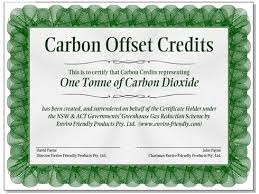The massively beneficial developments that have occurred in various sectors of our existence since the Industrial Revolution, while vastly improving the quality of life, have all brought with them one very dangerous by product – carbon, in multiple harmful forms. From the air conditioners, refrigerators, and televisions that we are so accustomed to making use of daily, to the cars, planes, ships and other modes of transport that have evolved to become more efficient and yet more environmentally dangerous with each passing day, mankind today plays a large role in contributing to the carbon crisis looming over our heads at present.
The main sources of carbon emissions are, of course, power plants that are powered by coal, fossil fuels, or natural gas. The more people begin taking to modern advancements, the more these power plants are built and used and the more they emit into our biosphere. Practically every object around us in the world today has come from a factory that contributes to carbon emissions or is in itself a machine that releases harmful polluting gases. For those of us sitting at home, using our computers and eating out of CFC releasing refrigerators, it is harder to see the bigger picture, wherein carbon in its various forms is creating climate changes that are causing melting of ice caps and could eventually lead to a rise in the sea level that could prove fatal for millions.
Coal has always been the primary factor of global carbon emissions, its share being about 40%, but the share of natural gas has increased from 15% to 20%. The weight of oil in the carbon emissions has decreased from 48% to 36% but the combined weight of electricity, heat generation and transport has moved from just half to two-thirds.
With the Industrial Revolution’s numerous medical advancements and enhancements came an increased life expectancy for humans and a higher birth rate. The new comforts and resources led to increased longevity of human life. This, that should have been a benefit, is turning out not to really be that helpful anymore. Greater the population, more are the consumers who will take to modern conveniences which will result in many more power plants to further increase the damage our emissions are doing to the environment. With this uncontrollable growth rate, decreasing carbon emissions is only going to get harder. At this stage, there is already a much larger amount of anthropogenic carbon in the atmosphere than nature can safely absorb and balance out. It is deteriorating the quality of the air we breathe.
And what steps have been taken to create change? The first and obvious step to take is to switch to renewable sources of energy such as geothermal energy, wind energy, solar energy and hydro energy, which currently produce a shamefully measly amount of the energy we use. If the US makes efforts to use renewable sources of energy to produce a higher percentage of their electricity and heat generation, the world will follow including the developing countries. We have to understand that the effects of the carbon crisis cannot be as easily reversed as those of the global financial crisis had, which makes it even more important for us to take early steps in the right direction.
Since it is not feasible for every company or group or individual to drastically reduce their carbon emissions, the emergence of the carbon market has been a huge help. How the system works is that a particular company is given a limit of carbon emissions for the year, typically less than what it emitted the year before, the idea being to reduce the limit every year.
The main objective is to emit carbon within the given limit, and if it is exceeded, then the company voluntarily buys more carbon offsets or carbon credits, in kind of an attempt to make up for the damage it is causing the environment. So the money paid for the offsets or credits is used up by various organisations or environmental groups that are working on methods to reduce carbon emissions and/or create more carbon sinks, or is used to fund “carbon projects” that lead to the prevention of future emission of greenhouse gases. In other words, it is an attempt at being carbon neutral, i.e. having zero carbon footprints.
Often times, in a group of companies, each is given a different carbon check, based on how much is calculated to be necessary to produce for regular functioning. If one establishment uses less than its limit, then it can sell its remaining credits or offsets to another corporation that has already crossed its extent and is in need of excess offsets.
Carbon neutrality, although very controversial and believed by many to not be creating any benefits at all, has become a hot topic. Famous UK band Coldplay’s appropriately named album “CO2013” was the first carbon neutral album ever to be produced. Although nobody is bound legally to use this system, many businesses, whether in an attempt to seem “green” or genuinely concerned about the state of the environment have been opting to use carbon credits nowadays.

Leave a Reply